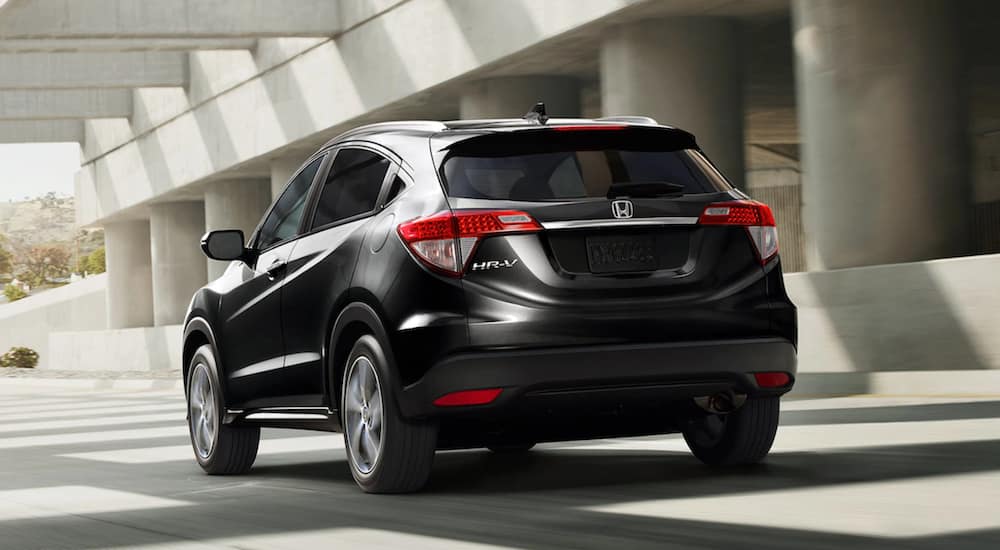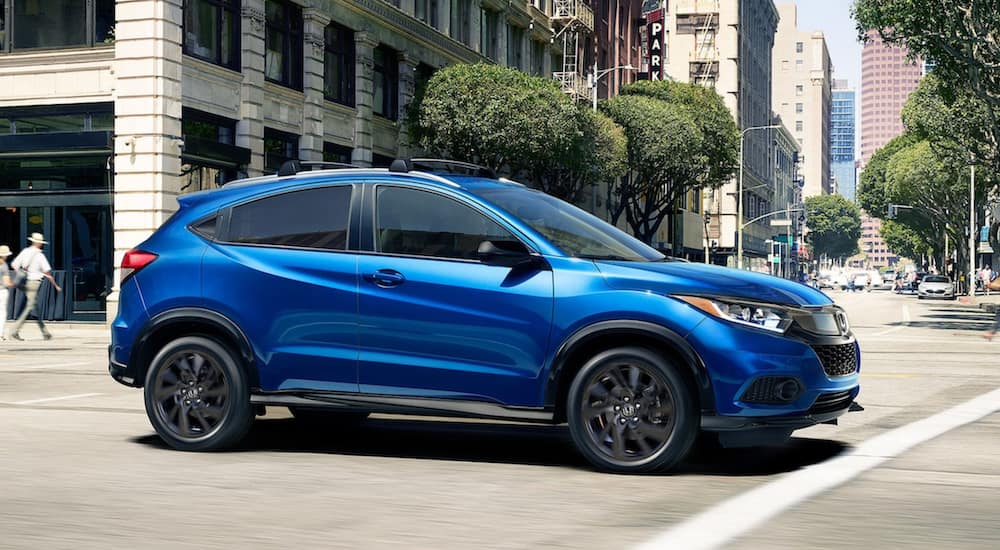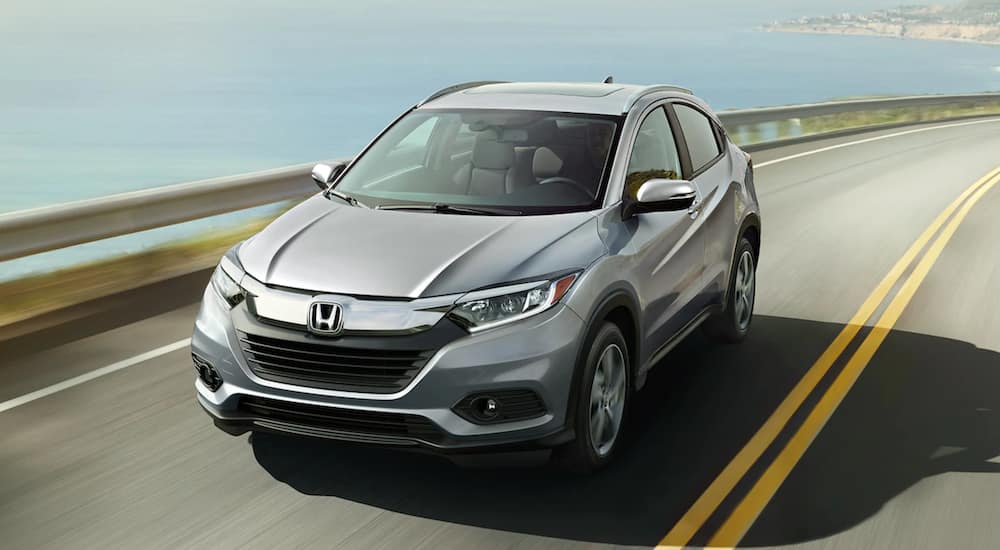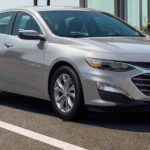If you are in the market for a crossover SUV, there is no shortage of choices. The competition in this segment of the market is fierce, and new and improved models are being introduced every year. This is good news for consumers as competition drives inspiration, and manufacturers don’t want to misstep and get left behind. Manufacturers noticed that after years of being the most popular segment in the market, the love for the sedan was quickly fading. A number of manufacturers have largely abandoned the sedan in favor of SUVs, especially crossovers. What was once thought to be a craze, crossovers have proved that they are not just a flash in the pan, and it looks as though the 2021 Honda HR-V and other affordable sedan replacements are here to stay. As such, it is important that you are familiar with the choices you have so you wind up with the crossover that fits your needs.
What Is a Crossover?
The term “crossover” is a fairly new word in the automotive industry; it was never heard of 10 years or so ago. Many people who bought the very first crossovers really had no idea what they were buying, but the definition of a crossover becomes more concise and clear over the years. When they first hit the market, crossovers were considered a lot of things, including rounded minivans, small SUVs, and tall station wagons. The modern crossover is essentially a compact SUV, but newer models are even beginning to push that boundary.
A few decades ago, SUVs were the choice for those who desired a family vehicle. Of course, SUVs were big, rugged, and not all that comfortable to drive. Crossovers hit the market and gave consumers a choice. Crossovers were favored for their comfort, fuel efficiency, and improved handling. That is, crossovers became SUVs with the characteristics of a sedan.
One reason crossovers became so popular was the fact they resembled SUVs but were a lot less expensive. Still, they offered a rugged look, held the potential for off-roading, and could seat several passengers and still have plenty of cargo space. Crossovers also offered many of the perks associated with minivans but without the boxy styling and negative connotations.

Advantages Over The Subaru Crosstrek
The Subaru Crosstrek is a fine crossover with plenty going for it. But there are a few advantages the HR-V has over this competitor. For example, you will get more cargo space with the HR-V. Behind the second row of seats, the Crosstrek offers 20.8 cubic feet of cargo space. Fold the seats over, and that number expands to 55.3 cubic feet. In the Honda HR-V, you will find 24.3 cubic feet of space in the area behind the second row of seats and 58.8 cubic feet of storage when the seats are folded flat. It might not seem like a big deal in terms of numbers, but when you are trying to squeeze the great deals you scored at the flea market into the back, you will appreciate every added inch of space.
The Crosstrek is wider and longer than the HR-V – not by much, mind you, but enough to make a difference when maneuvering through a crowded parking lot or into a tight parking space. Admittedly, many people are opting for a crossover because of their size. In a world where we spend much of our time running errands and finding parking spots, the ease with which you can slip your HR-V into a spot is a blessing.
Advantages Over The Toyota C-HR
The Toyota C-HR and the Honda HR-V offer compelling pricing, performance, and comfort, but the HR-V has a few advantages over the C-HR. For example, while the Toyota C-HR has average fuel economy ratings, the HR-V offers excellent fuel economy. The Toyota delivers 27 MPG in the city and 31 MPG on the highway, while the Honda boasts 28 MPG in the city and 34 MPG on the highway. So it makes more sense to choose the Honda if you plan on taking it on a lot of road trips.
The Toyota C-HR offers an attractive interior with nice designs and a variety of textures, but there are just too many plastic pieces that tend to give it a cheap look and feel. In comparison, the Honda HR-V offers an interior that has a modern look and feel, eye-pleasing cloth upholstery, and an attractive and convenient layout. And on a side note, the HR-V has considerably more cargo space than the C-HR as well.
Advantages Over The Hyundai Kona
The 2021 Hyundai Kona gets great reviews, and deservedly so, it is a fine crossover with a lot to offer. However, there are a few features that the HR-V offers that you won’t get with the Kona. Let’s start off with cargo space; again, the HR-V is the clear winner in this category, and by a lot. The total maximum cargo volume of the HR-V is 55.8 cubic feet, while the Kona can only muster up 45.8 cubic feet of cargo space; that’s a big difference.
Second-row legroom is another feature that separates the HR-V from the competition. The Honda HR-V boasts 39.3 inches of second-row legroom compared to 34.6 inches in the Kona. You probably know people who will appreciate the added five inches of legroom.
Honda offers the Magic Seat in its HR-V models, and the Kona has nothing that can compete with it. The Honda Magic Seat is a 60/40-split rear seating that folds into several configurations. The Tall Mode lets the driver fold the back seats up into a vertical position to create as much as four feet of space for taller items. The Long Mode allows the owner to fold down both the rear seats and the front passenger seat to transport longer items with ease. There is also a Utility Mode that will maximize cargo space and a Refresh Mode that will allow the front passenger to fold the seat back, stretch out, and enjoy a nap in comfort.
The HR-V Is the Small Crossover to Beat
Crossovers have become very popular in recent years, and consumers are flocking to dealerships ready and eager for a test drive. You might be on the fence when shopping for your next vehicle and wonder if a crossover is the right choice for you. But sometimes doing what everybody else is doing is the right choice. If you are in the market for a spacious vehicle that is affordable, has a roomy interior, and is fuel-efficient, then a compact crossover like the HR-V deserves your attention.
And even though the competition in this segment is hot, there are several reasons why you should at least consider the Honda HR-V. For the driver who has it all, this Honda crossover allows you to enjoy all of the benefits of various classes, including full-size SUVs, minivans, and sedans, without very many downsides. In terms of wants and needs, there are several things to consider. You might not need a roomier interior, but that should not be a reason not to buy a crossover. You might not need all-wheel drive, but it is never a bad feature to have and might actually come in handy in certain situations. The bottom line is that the Honda HR-V is a smart choice in the small crossover segment; besides, it will also look great in your garage.





